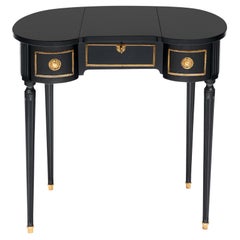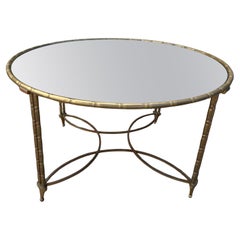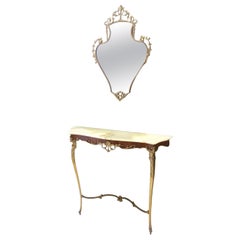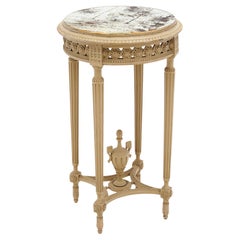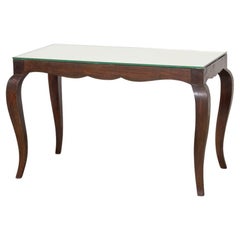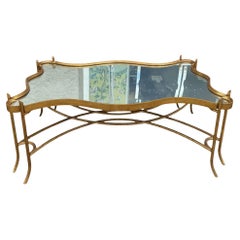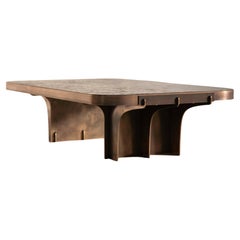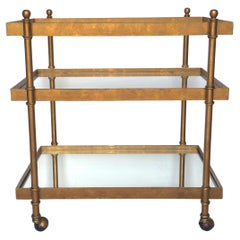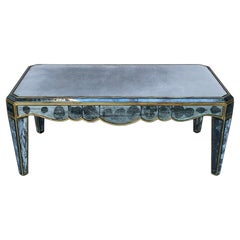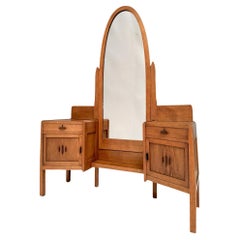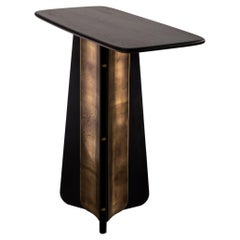Mirror Tables
21st Century and Contemporary American Regency Mirror Tables
Iron
2010s British Minimalist Mirror Tables
Stone, Limestone, Marble, Carrara Marble, Slate, Metal, Brass, Bronze, C...
20th Century French Modern Mirror Tables
Metal
1940s American Hollywood Regency Vintage Mirror Tables
Mirror, Wood
1920s Dutch Art Deco Vintage Mirror Tables
Mirror, Macassar, Oak
2010s British Art Deco Mirror Tables
Stone, Limestone, Marble, Carrara Marble, Slate, Metal, Brass, Bronze, C...
1960s Dutch Mid-Century Modern Vintage Mirror Tables
Brass
Mid-20th Century Spanish Mid-Century Modern Mirror Tables
Brass, Iron
Mid-20th Century Italian Mid-Century Modern Mirror Tables
Brass, Steel
Early 20th Century Unknown Louis XVI Mirror Tables
Bronze
1960s Swedish Scandinavian Modern Vintage Mirror Tables
Mirror, Oak
Mid-20th Century Austrian Mid-Century Modern Mirror Tables
Metal
1970s Italian Space Age Vintage Mirror Tables
Mirror, Laminate
Early 20th Century French Hollywood Regency Mirror Tables
Crystal, Brass, Chrome
Mid-20th Century Italian Louis XVI Mirror Tables
Marble
Late 20th Century Unknown Mid-Century Modern Mirror Tables
Shagreen, Upholstery, Mirror, Wood
1970s Italian Mid-Century Modern Vintage Mirror Tables
Metal
21st Century and Contemporary Indian Mirror Tables
Aluminum
Late 19th Century French Louis XVI Antique Mirror Tables
Bronze
1930s French Art Deco Vintage Mirror Tables
Granite, Marble, Brass
Mid-20th Century American Hollywood Regency Mirror Tables
Mirror, Wood
Mid-20th Century French Art Deco Mirror Tables
Marble, Chrome
Mid-20th Century French Art Nouveau Mirror Tables
Ormolu
1970s American Brutalist Vintage Mirror Tables
Slate, Brass, Copper, Pewter
1970s French Hollywood Regency Vintage Mirror Tables
Mirror, Burl
1960s Danish Scandinavian Modern Vintage Mirror Tables
Mirror, Teak
Mid-20th Century Italian Louis XVI Mirror Tables
Brass
1930s Dutch Art Deco Vintage Mirror Tables
Mirror, Beech
2010s British Minimalist Mirror Tables
Stone, Limestone, Marble, Carrara Marble, Slate, Metal, Brass, Bronze, C...
19th Century French Louis XVI Antique Mirror Tables
Marble
Mid-20th Century Dutch Mid-Century Modern Mirror Tables
Mirror, Pine
Mid-20th Century French Mid-Century Modern Mirror Tables
Marble, Chrome
21st Century and Contemporary Italian Modern Mirror Tables
Marble, Brass
Late 19th Century French Louis XVI Antique Mirror Tables
Bronze
19th Century Italian Baroque Antique Mirror Tables
Mirror, Giltwood
2010s British Art Deco Mirror Tables
Stone, Limestone, Marble, Carrara Marble, Slate, Metal, Brass, Bronze, C...
Mid-20th Century English Mid-Century Modern Mirror Tables
Leather, Mirror, Wood
1970s French Neoclassical Vintage Mirror Tables
Brass
1970s American Mid-Century Modern Vintage Mirror Tables
Mirror, Wood
1960s Italian Mid-Century Modern Vintage Mirror Tables
Metal
2010s Portuguese Modern Mirror Tables
Stainless Steel
2010s Brazilian Modern Mirror Tables
Mirror, Oak
1960s Danish Scandinavian Modern Vintage Mirror Tables
Teak, Mirror
1960s Danish Scandinavian Modern Vintage Mirror Tables
Mirror, Teak
Mid-20th Century French Art Deco Mirror Tables
Bronze
1960s Danish Scandinavian Modern Vintage Mirror Tables
Mirror, Teak
Mid-20th Century Italian Rococo Mirror Tables
Gold Leaf
1970s Belgian Hollywood Regency Vintage Mirror Tables
Brass
Late 20th Century Italian Edwardian Mirror Tables
Brass
2010s Portuguese Modern Mirror Tables
Stainless Steel
2010s British Minimalist Mirror Tables
Stone, Limestone, Marble, Carrara Marble, Slate, Sheet Metal, Brass, Bro...
2010s Italian Mirror Tables
Metal
21st Century and Contemporary American Mirror Tables
Stone
Mid-20th Century Italian Mid-Century Modern Mirror Tables
Brass, Iron
1970s American Mid-Century Modern Vintage Mirror Tables
Fabric, Rattan, Mirror
Mid-20th Century Post-Modern Mirror Tables
Brass
Mid-20th Century French Mid-Century Modern Mirror Tables
Iron, Wrought Iron
1950s Italian Mid-Century Modern Vintage Mirror Tables
Mirror, Walnut, Burl
Mid-20th Century Italian Mid-Century Modern Mirror Tables
Brass, Iron
19th Century French Other Antique Mirror Tables
Mirror, Wood
Read More
20 Inviting Dining Rooms Perfectly Arranged for Entertaining
Top interior designers show — and tell — us how to create delectable spaces for hosting dinner parties.
This Alain Delon–Designed Table Is Almost as Handsome as He Was
Fans of the French film star may be surprised to learn that he had a flair for furniture with sleek lines and disco-era flash.
Uchronia’s Plant Stand Gives Pots a Pretty Perch with All the Trimmings
Like other pieces in the firm’s Candy Box collection, the cheerful limited-edition design showcases French craft.
The Ultimate Guide to Types of Tables for the Home
Whether you’re just moving in or ready to give your home a makeover, our guide will give you pointers on tables that are fitting for every room, nook and hallway.
Is Lionel Jadot the Willy Wonka of Upcycled Belgian Design?
From his massive collaborative workshop in a former paper factory, the designer concocts funky furniture from disused materials, as well as luxe hotel interiors like the new Mix Brussels.
Inspired by the Cosmos, Sandra Nunnerley’s Nova Table Has a Futuristic Feel
The designer’s innovative use of an unexpected material gives this console a lift.
This 19th-Century Gilded Desk Displays a Fanciful Kingdom in Marquetry
The stately piece brings both gravitas and whimsy to any work space.
In Guadalajara, These Luscious Side Tables Are Chiseled from Volcanic Rock
Use them as tables or stools, indoors or out.
